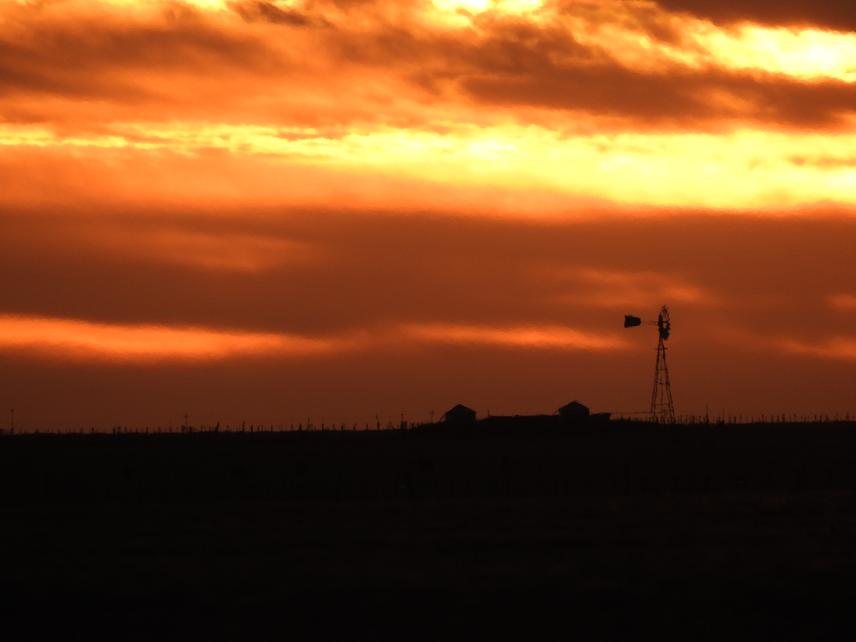Agustín Gabriel Álvarez
The Pampas Meadowlark (Leistes defilippii) was once among the most abundant and emblematic birds of the Pampas grasslands of South America, and is now listed by the IUCN as globally Vulnerable and decreasing. The main threat to this species is the severe degree of modification of its natural habitat, the Pampas grasslands, which are among the most severely modified and threatened ecoregions in Argentina and South America.

Sunset in the rangelands where animal husbandry and grassland conservation efforts meet. © Agustín Gabriel Álvarez.
Our main goals are to generate key knowledge about the species’ movements and habitat use, and to approach communities to increase public engagement and awareness of Pampas Meadowlark and grassland conservation. By banding and equipping adult Pampas Meadowlarks with GPS trackers we will learn how and where they move during the non-breeding season, and the degree of breeding site fidelity within the population. Understanding movement distances and patterns will allow us to better interpret the habitat suitability maps we have generated, and to prioritise certain areas for grassland conservation and restoration measures. Additionally, breeding biology studies will help define key conservation actions, and interviews with rural stakeholders to understand their interests in conservation and production will be crucial for developing tailored approaches in key areas.
Header image: Pampas Meadowlark adult male perched in the grasslands. © Agustín Gabriel Álvarez.